From the beginning of time, the most common building materials have been the most common materials in the immediate environment. This of course means that early buildings were built of dirt, a material that is plentiful, cheap, and malleable.

Piece of rammed earth from ancient Bhutanese building (all photos by Sam Hagerman)
Many of the oldest buildings in the world are made of rammed earth, or compacted dirt. And this type of building continues to be a common and viable construction methodology in many places of the world.
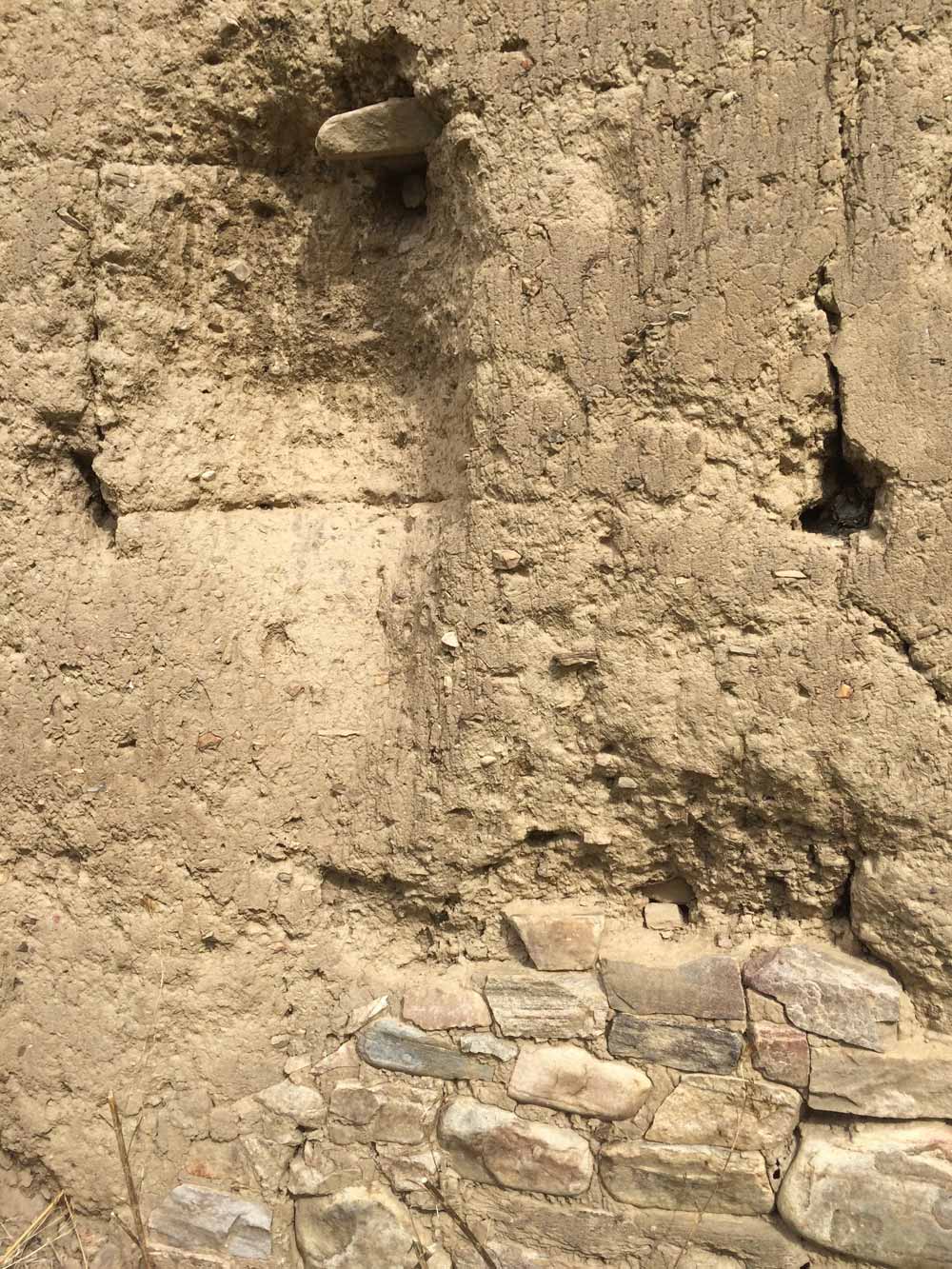
Detail of ancient rammed earth wall, Bhutan
I recently had the honor and pleasure of traveling to Bhutan as part of a delegation with the Karuna Foundation, and on this trip I saw many examples, old and new, of rammed earth structures. Interestingly, there are some direct building science connections between the success of rammed earth buildings and of the high performance building assemblies that we employ as part of our Passive House projects here in Portland and Seattle.
Take a look at this new rammed earth structure I saw in Bhutan:
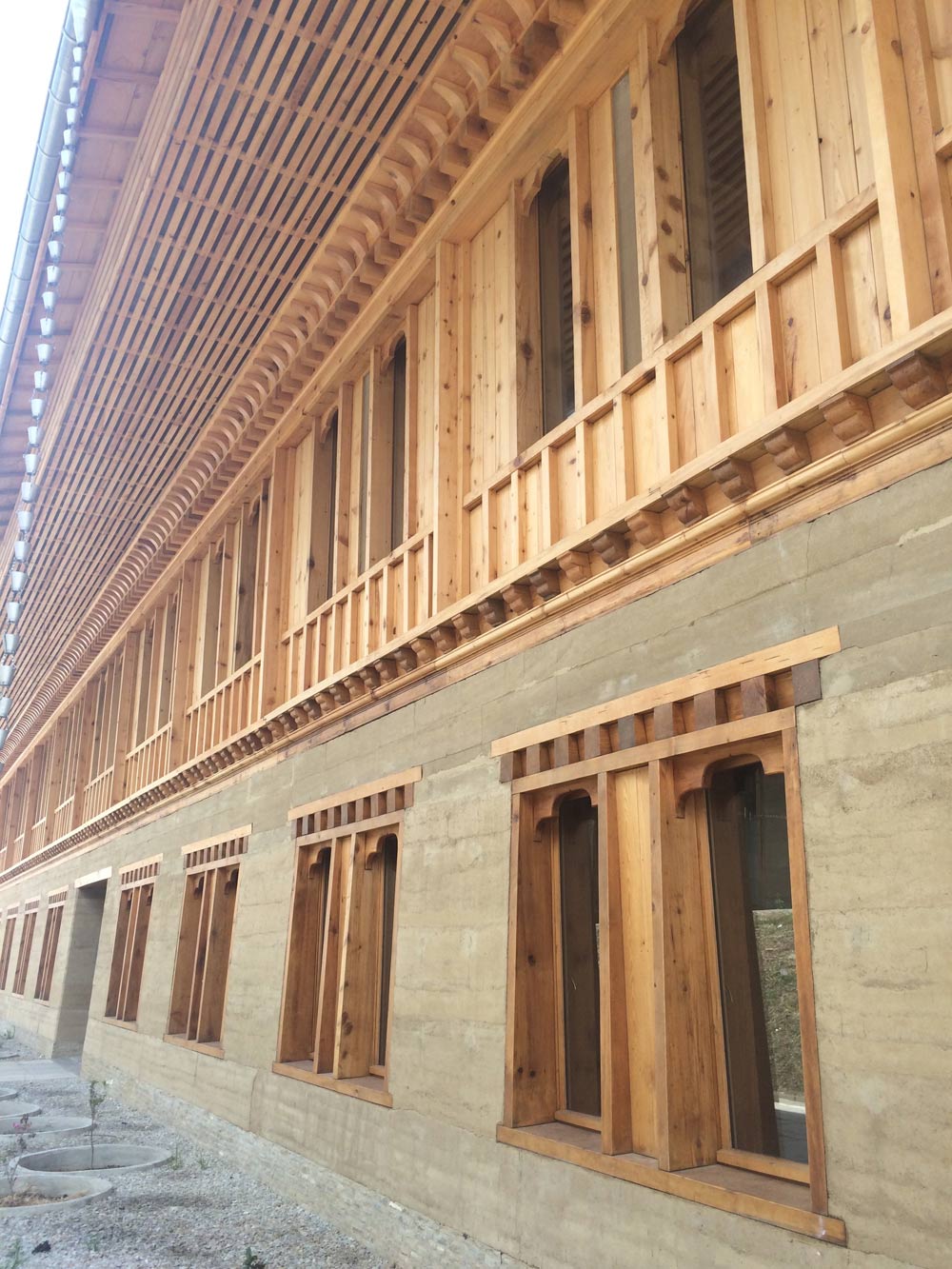
New rammed earth building in Bhutan
Note that at the base of this rammed earth structure is stacked stone. I don’t know the exact history of this, but the layer of stone functions to break the rammed earth portion of the structure from the potentially damp soil, therefore short-circuiting any capillary action that would move water from the ground up into the structure. This was common of every ancient rammed earth structure I saw in Bhutan. And it’s similar to rammed earth construction I have built that sits on concrete foundations. The top of the concrete foundation is coated with a capillary break to act as a similar short-circuit for water from the ground.

Bhutanese ruin
Rammed earth walls are resilient, solid assemblies that can last a surprisingly long time out in the open, even without any cover. Given that rammed earth walls are inherently thick – two feet or more in depth – they have inherent positive thermal qualities and a surprisingly high level of airtightness, two key qualities of the high performance buildings we build today.
Modern, sophisticated versions of rammed earth wall assemblies have been developed to meet other high performance characteristics.
In ancient rammed earth structures you can see evidence of tensile fibers in the assembly such as hair and straw. Additionally, a two to three inch wooden log is often located every 2 or 3 feet horizontally in the wall. In modern rammed earth assemblies, tensile fibers and logs are replaced with rebar, which essentially forms a ferro-earth assembly. Adding a small amount of Portland cement to an earth mix yields a similar result to a ferro-cement assembly. You get the compressive strength of earth with the tensile strength of the steel. This magic combination of compressive and tensile strength is what holds up all the big buildings that surround us here, by the way.
Additional Passive Building Strategies
Rammed earth is a common material in buildings in Bhutan, and it’s one of a set of passive strategies that showcase a powerful marriage of form and function employed in traditional Bhutanese buildings, as seen in this photo of a ruin of a traditional home here:
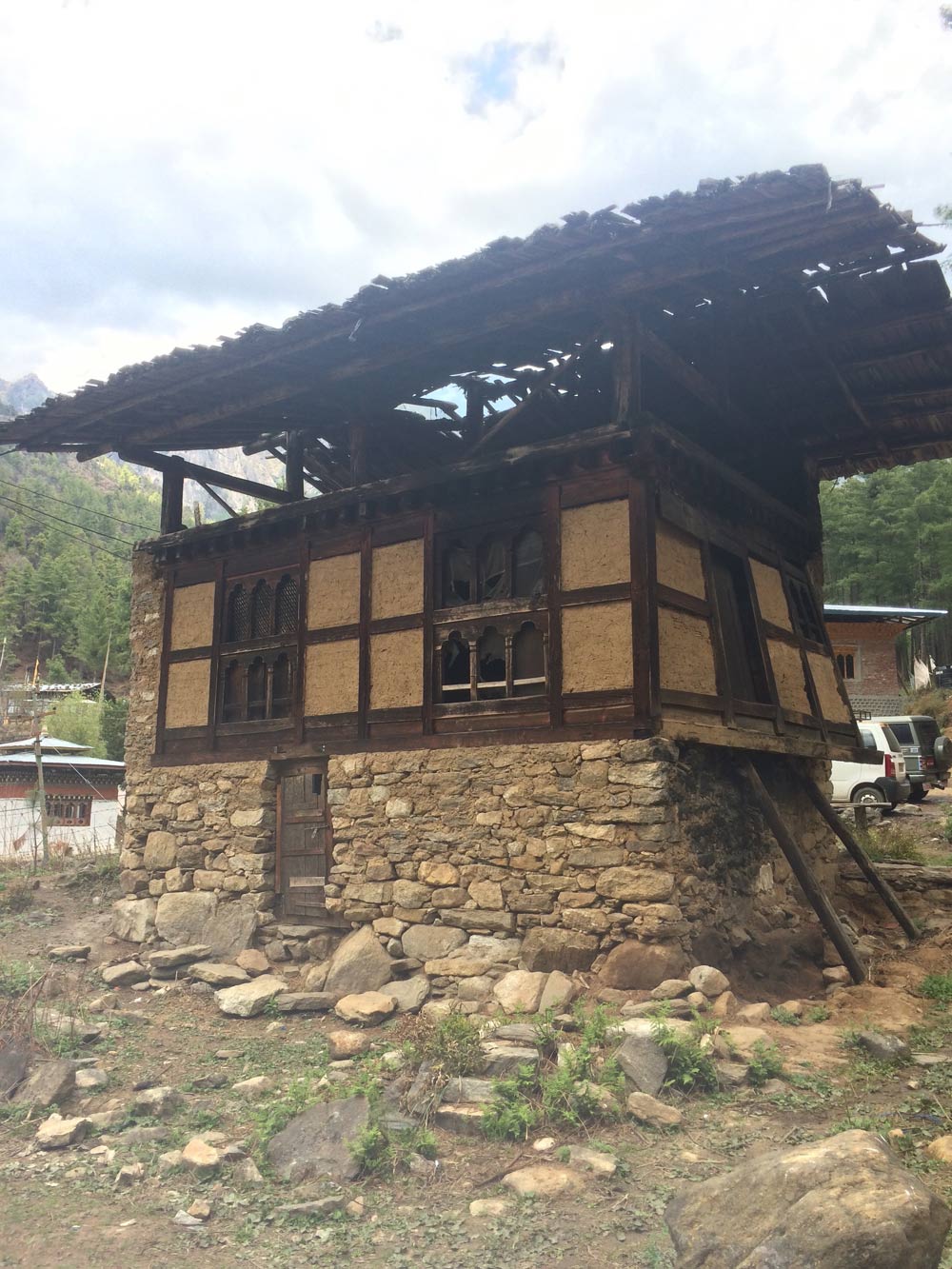
Ruin of traditional Bhutanese home, near Paro
You’ll notice three distinct levels to this house, each playing a role in the annual cycle of family life and each taking advantage of passive energy strategies. The first level, with the stacked stone walls, is used to house the animals, with piles of straw (needles from the Bhutan Pine) for bedding.
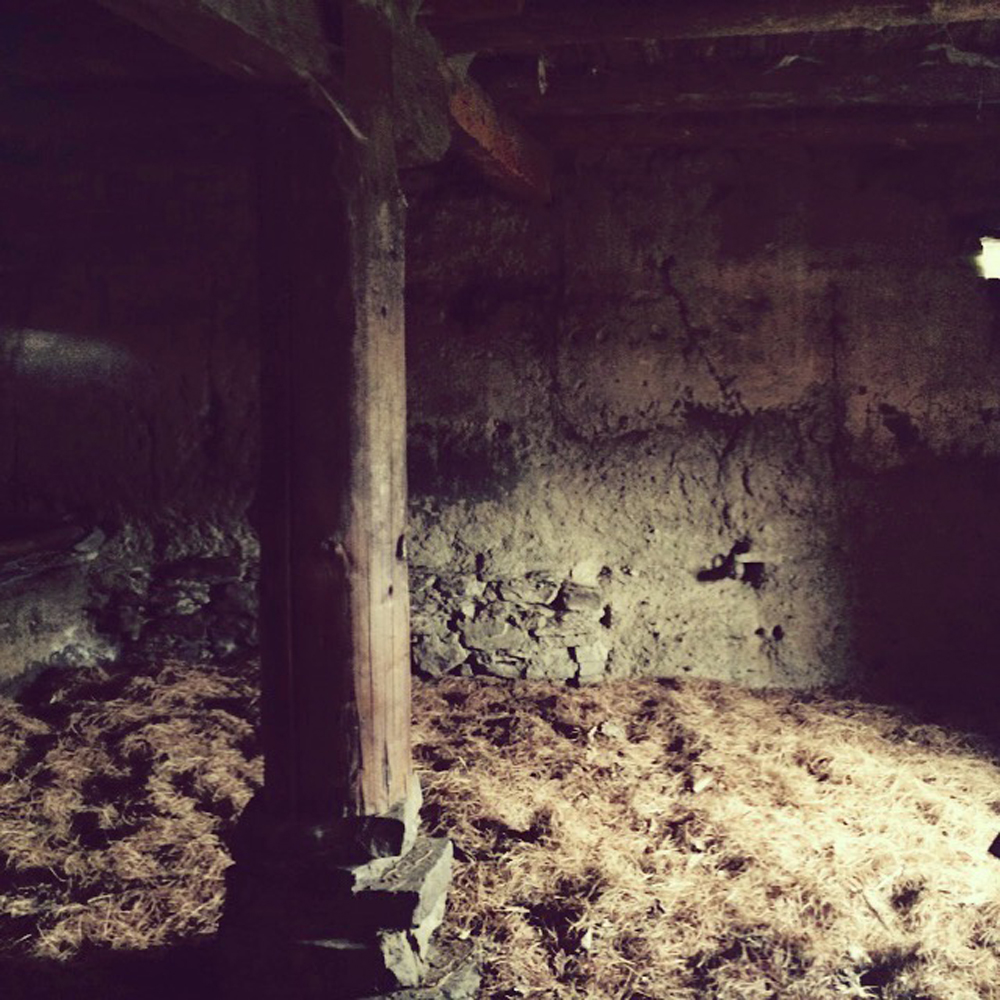
Interior of home’s first floor barn
The body heat of the animals and of the composting straw and manure creates warmth that rises up into the living quarters on the second level. That second level is built out of a thick rammed earth assembly which helps moderate heat loss. And on the third floor, in the attic, straw is stored in the fall to create a very thick layer, providing a layer of insulation for the living quarters below. Over the course of the winter and spring the young members of the family throw the straw down into the courtyard and move it into the first floor of the house to replenish the animals’ bedding. So, as the weather warms, the insulation layer in the attic is slowly removed, up into the summer when the animals are outside all the time.
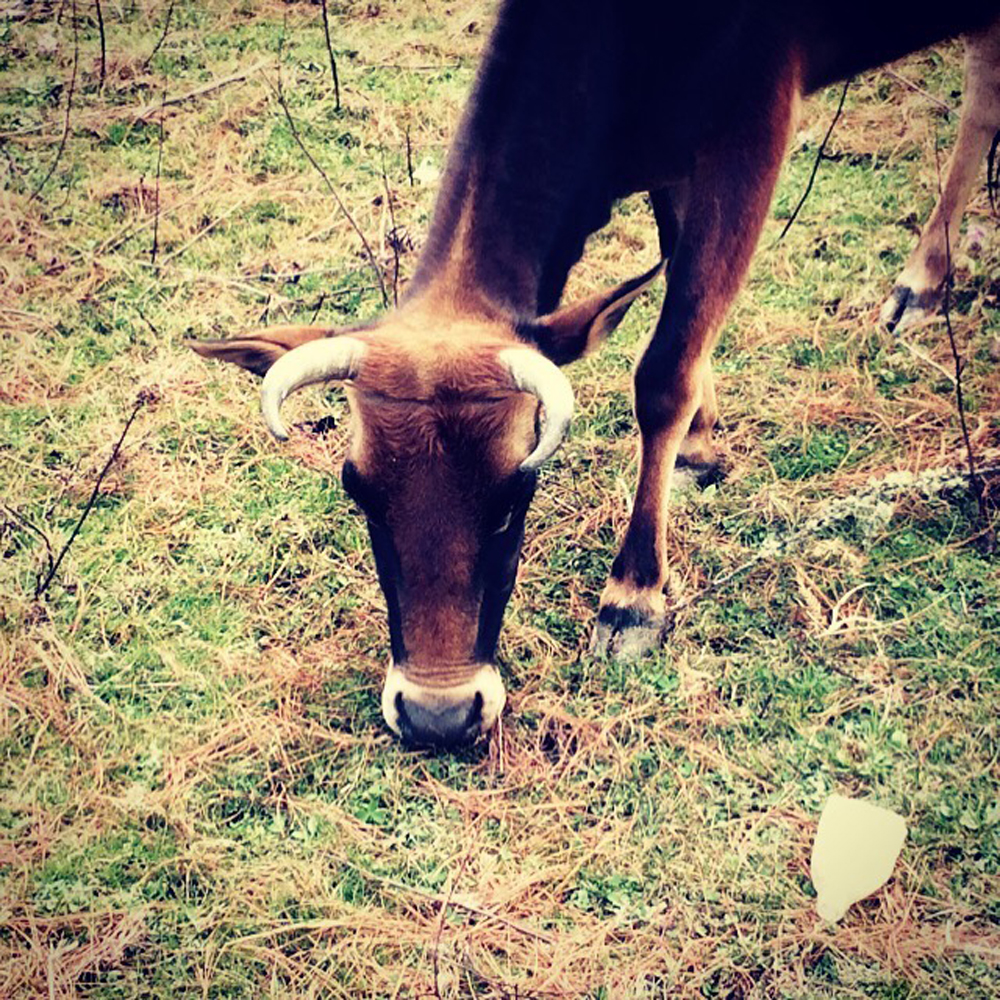
Steer in Bhutan
Now, these are hardy folk, and there’s no doubt that these traditional homes are colder than what we’re accustomed to. But this tri-level integration of passive energy strategies is pretty cool, and a good reminder that our modern world of high performance building can draw lessons from ancient roots.
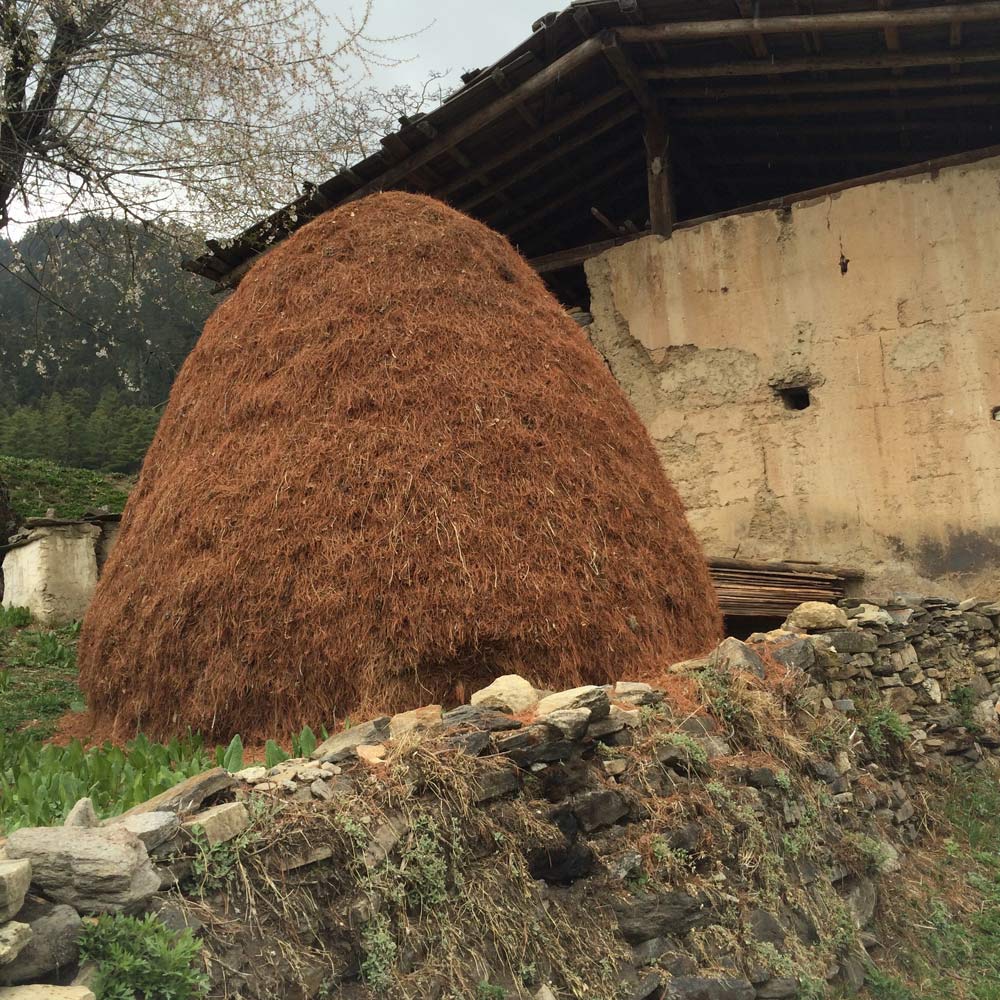
Stack of straw, Bhutan Pine needles
Back to Field Notes